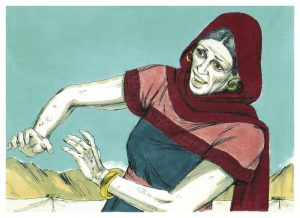Nosi 2019: Discharges and Expulsion
by devadmin | June 13, 2019 10:47 pm
Discharges and Expulsion:
A few random thoughts; we shall tie most of them together.
- Today 6/13/ on our calendars, is mitzvah day. What the hec is mitzvah day and isn’t every day a mitzvah day? So happens that just last week, the Oisvorfer wrote about the origins of the 613 mitzvis (taryag) found in the heylige Toirah, and this morning, as he was listening to the Nachum Segal Network – in its 36th year of broadcasting Jewish music, news, as well as other interesting programming- Nuchum mentioned that today is mitzvah day. Seemingly, its creator very cleverly drew a hekish (a comparison) from the calendar date to the mitzvahs in the heylige Toirah, and shoin, a new yom tov was born. Do a mitzvah, why not? The Oisvorfer has known Nuchum for decades and was a shtikel involved in assisting Nuchum’s endeavors during more challenging times. You can listen live, or anytime on demand by clicking here http://www.nachumsegal.com/
 Many of us have been thrown out of a yeshiva or two, or at least asked not to come back next year. Ober, no matter how poorly we behaved, very few of us have been thrown out of camp. Expulsion from a camp is a shtikel embarrassing. Ober why are we discussing camp and expulsion in June at least two weeks before most begin their seasons? Nu it so happens that the topic of expulsion -at least temporarily- is timely and is discussed in this week’s parsha. We shall get to that soon.
Many of us have been thrown out of a yeshiva or two, or at least asked not to come back next year. Ober, no matter how poorly we behaved, very few of us have been thrown out of camp. Expulsion from a camp is a shtikel embarrassing. Ober why are we discussing camp and expulsion in June at least two weeks before most begin their seasons? Nu it so happens that the topic of expulsion -at least temporarily- is timely and is discussed in this week’s parsha. We shall get to that soon.- Grada expulsion is also timely as just yesterday, the Oisvorfer received an email from one of the shuls he belongs to -he’s a member of four, down from five- discussing this very topic. The rabbi’s email addressed a widely disseminated letter that was passed around and discussed in various neighborhood shuls and shitbelich over Shovuis. Shoin: without knowing “all” the relevant facts, most of us are hard pressed to know who’s in the right, ober, we need to assume that our rabbis -in particular the rabbi who penned the letter- are well intentioned, and take such dire measures only in very unique circumstances. That being said, let’s hope the matter will resolve itself, ver veyst, and veyter.
- According to the Mayo clinic, measles is a childhood infection caused by a virus. Once quite common, measles can now almost always be prevented with a vaccine. And says Rav Google azoy: Adult measles shows up first with a red flat rash, starting on the face and neck. The rash then begins to appear more solid and spreads to the trunk and arms in 2 to 3 days where the spots remain discrete. Another sign of measles are Koplik spots –whatever those are- white spots on the inside of the cheeks. In fact, back in the day, measles was sometimes known as “little leprosy.”
Rashes? Spots? Hmmm, where have we seen these before? Where? In the heylige Toirah of course where we find everything else. Decades back, our rabayim (our Hebrews studies teachers), while hitting us with their sticks, or otherwise trying to poke us with their other stick, if you chap, would tell us that “alas shteyt in di gemorah” (everything can be found in the heylige Gemora). In fact, they are mostly correct. And rashes on one’s body? Well, they are discussed both in the heylige Toirah and the Gemora.
Long before the resurgence of measles which has many communities, schools, summer camps, and others on high alert, the heylige Toirah, in this week’s parsha and way back in Sefer Vayikra gave the Yiddin clear instructions on how to properly handle people the RBSO considered impure. Let’s meet a group of three who were discharged, at least one of them, who himself (could also be a woman) had epes a shtikel discharge, if you chap.
As we get to the third aliya in this week’s expanded parsha – incidentally, for those who habitually -bi’mayzud mamish- (intentionally) come to shul late, or enjoy talking during laining, avada it’s vichtig to know that parshas Nosoi is the longest in the entire heylige Toirah with 176 pisukim. Let’s see what the heylige Toirah tells us this week about rashes and other discharges. Says the heylige Toirah (Bamidbar 5:1-3), azoy:
| 1. The Lord spoke to Moishe saying: | אוַיְדַבֵּ֥ר יְהוָֹ֖ה אֶל־משֶׁ֥ה לֵּאמֹֽר: | |
2. Command the children of Israel to banish from the camp all those afflicted with tzara’ath or with a male discharge, and all those unclean through [contact with] the dead. |
בצַ֚ו אֶת־בְּנֵ֣י יִשְׂרָאֵ֔ל וִֽישַׁלְּחוּ֙ מִן־הַמַּֽחֲנֶ֔ה
כָּל־צָר֖וּעַ וְכָל־זָ֑ב וְכֹ֖ל טָמֵ֥א לָנָֽפֶשׁ: |
|
| 3. Both male and female you shall banish; you shall send them outside the camp, and they not defile their camps, in which I dwell among them. | גמִזָּכָ֤ר עַד־נְקֵבָה֙ תְּשַׁלֵּ֔חוּ אֶל־מִח֥וּץ לַמַּֽחֲנֶ֖ה תְּשַׁלְּח֑וּם וְלֹ֤א יְטַמְּאוּ֙ אֶת־מַ֣חֲנֵיהֶ֔ם אֲשֶׁ֥ר אֲנִ֖י שֹׁכֵ֥ן בְּתוֹכָֽם: |
In plain English: the RBSO commands that all “timayim” (impure people) leave the camp. Out! Said the RBSO: Command the Children of Israel to send out of the camp all with an eruption (tzara’as), or discharge (zav), and whomever is defiled by the dead? Both male and female shall you send out, and they shall not defile their camps amidst which I dwell? What the hec is going on here?
 Seemingly, there were those who were forced out of the camp, expelled mamish– from ‘the machane’ because they were inflicted with certain skin diseases, chronic discharges from their genitalia, and those who had come into contact with a human corpse. These people were forced out, lest they contaminate the sanctuary lying at the center of the encampment. The heylige Toirah classifies these individuals as embodying a severe degree of impurity. Yikes and nebech!
Seemingly, there were those who were forced out of the camp, expelled mamish– from ‘the machane’ because they were inflicted with certain skin diseases, chronic discharges from their genitalia, and those who had come into contact with a human corpse. These people were forced out, lest they contaminate the sanctuary lying at the center of the encampment. The heylige Toirah classifies these individuals as embodying a severe degree of impurity. Yikes and nebech!
Avada we can easily chap that it’s quite easy to identify and spot those with tzo’ra’as, no matter its source. It’s a visible disease typically found somewhere on the body, on the face, and elsewhere. Ober, this week, the Oisvorfer is wondering azoy: how were the Yiddin to spot those with discharges? And what are these discharges? Nu, according to kimat all -itself no small wonder- the discharges being discussed in the parsha were of a seminal nature. Mamish? Were these discharges visible? Were they so severe to be noticeable? Did they leak through clothing? Were discharge inspection officers charged with checking? Who instructed people -men and women alike- to either pull down their hoiznen, and or, lift up their skirts? Ver veyst! What was going on here? Why did the RBSO direct Moishe to further direct the Yiddin regarding the expulsion of three classes of people? Is having a rash a sin? Big enough to be expelled? Nu, one can chap how certain emissions might be related to, or have come about, if you chap, through sin, ober the rash? And what about the individuals who happen to come across a corpse? Is that too a sin? And yet, they were all grouped together and banned? Why?
Let’s set the scene and find out. On Roish Chodesh Nissan, the Mishkan’s last Inauguration Day, the RBSO told Moishe, “All three Camps of the wilderness are holy. The innermost Camp of the Shechinah is holy to the highest degree. The Camp of the Leviim that surrounds it, and B’nei Yisroel’s Camp which surrounds that of the livi’im are of lesser sanctity. Accordingly, an “impure person” may have to leave one, two, or all three of the Camps, according to his or her severity of the tumah (impurity). Let’s go veyter. Which of the above was the most severe form of impurity? Seemingly, those afflicted with the tumah of tzora’as (leprosy) as they –the lepers as they were known back then- were expelled from all three Camps. The Midbar had three camps? We’ll get to that below. Ober, let’s first review what each category was. We know from the pisukim above that there are three types of impurities which cause a person to be expelled from camp.
 The Tzurua is one afflicted with tzora’as (maybe a form of leprosy), a physical illness that occurs – according to our Sages- as a result of gossip or slander. Tzora’as seemingly occurs when we defile our relationship with others by spreading gossip or slandering others. Logic would dictate that kimat the entire population of Yiddin would be so afflicted and that they would all be expelled for who amongst us today, and who amongst the Yiddin of that generation, was not speaking ill of someone? What else kept them occupied in that Midbar for forty years? In fact, we will be reading about their slandering of Moishe in the coming weeks.
The Tzurua is one afflicted with tzora’as (maybe a form of leprosy), a physical illness that occurs – according to our Sages- as a result of gossip or slander. Tzora’as seemingly occurs when we defile our relationship with others by spreading gossip or slandering others. Logic would dictate that kimat the entire population of Yiddin would be so afflicted and that they would all be expelled for who amongst us today, and who amongst the Yiddin of that generation, was not speaking ill of someone? What else kept them occupied in that Midbar for forty years? In fact, we will be reading about their slandering of Moishe in the coming weeks.
Shoin, let’s check in on the zov or zovo (zav and zava in English), male and females who have suffered some form of emission. What form? What is zov? Seemingly, it’s an impurity caused by physical impurities (read: emission of semen or the like). The Tomay Nefesh is meant to describe someone who came into contact with a corpse –lav davka (not necessarily) in the boudoir, if you chap, and is considered a defilement of the “soul.” However, we fully understand these three categories of being tomay -impure, the bottom line of what they all share in common is that they were all to be temporarily expelled. And while we are not provided with statistics on how many of each group were expelled, we can imagine that those with male discharges made up the great majority of those being banished. Es farshteytzich (self-understood) and veyter. Shoin, having introduced all three, let’s get back to emissions and discharges, a fluid subject, if you chap.
 This week, we shall shine a light on the zov and zovo. How does one become a zov or zovo? How many discharges and over what period of time is one declared a Zov? In Toirah terminology, the Hebrew word zav (flow) is a state of ritual impurity arising from abnormal seminal discharge from the male sexual organ. Purification requirements for the zav include counting seven days without seminal discharge(s), immersion in a mikveh (spring), and bringing certain korbonis (sacrifices). And in plain English: The zav is a man who has a white (other than standard), non-seminal discharge from his reproductive organ. Is that emes? Grada, since high school, many were under the impression that all white emissions were standard. Others say that zav is referring to semen mamish, and mistama this you can chap. Does one emission or discharge render one a zav? Do women have discharges? Let’s find out.
This week, we shall shine a light on the zov and zovo. How does one become a zov or zovo? How many discharges and over what period of time is one declared a Zov? In Toirah terminology, the Hebrew word zav (flow) is a state of ritual impurity arising from abnormal seminal discharge from the male sexual organ. Purification requirements for the zav include counting seven days without seminal discharge(s), immersion in a mikveh (spring), and bringing certain korbonis (sacrifices). And in plain English: The zav is a man who has a white (other than standard), non-seminal discharge from his reproductive organ. Is that emes? Grada, since high school, many were under the impression that all white emissions were standard. Others say that zav is referring to semen mamish, and mistama this you can chap. Does one emission or discharge render one a zav? Do women have discharges? Let’s find out.
Nuch a mol (one more time): The term zav as used by the heylige Toirah and further interpreted by our sages, refers to a discharge of sperm that is released because of an internal sickness that effects the organs of the body in which it collects. When a zav emission is discharged, it is not released with an erection like semen, and its release does not involve any desire or satisfaction. Instead, it’s drawn out like a barley dough and is dark like the white of an unfertilized egg. In contrast, viable sperm is white and adhesive like the white of a fertilized egg. Shoin, in times when most diets are protein laden, we can relate. Zov can also be a pus-like discharge resembling the liquid from barley dough or soft barley batter. Whatever it is, if one emits zov, he is tomay (impure). Always? Immediately? Not! A man who emits Zov one time is tomay but is not a zov. He is a Ba’al Keri and must immerse and wait for nightfall to become Tahor (pure). What’s a Ba’al keri you ask? Shoin, a ba’al keri is one who has had a seminal emission. Fartig! His purification is accomplished through immersion in a mikvah. And the good news? A ba’al keri does not transfer impurity to objects. More good news: according to most, in our times, the ba’al keri is not obligated to purify himself in the mikveh. Why not? Because we are in golus without ritual services associated with Temple services. That being said, some say it’s a commendable practice for the emitter to go to the mikveh before davening or learning the heylige Toirah. Avada one should avoid keri while in the mikveh, if you chap.
We first met the zov back in Vayikro (15:2) where the heylige Toirah told us azoy: “When a man has a discharge out of his flesh, his discharge renders him unclean.” The law is that he who has a flux for the first time is considered to have experienced a keri emission. Says the heylige Toirah (15:6) about that guy: “When a man has a seminal discharge, then he shall immerse all his body in water, and be unclean until the evening.” A second flux renders him a zav regarding uncleanness, i.e., he renders unclean the bed upon which he lies and everything upon which he sits, and he must count seven clean days and immerse in running water in order to be clean. A third flux without a day’s separation between one experience and the other, renders him a confirmed zav; thus after he counts seven days for his cleansing, he must immerse himself and after the sun sets on him, he brings his sacrifices on the eighth day: two turtledoves or two young pigeons, one for a korban chatas (sin offering) and one for an oilah (an elevation offering). As long as he has not brought his sacrifices, he must not enter the Temple and may not eat sacrificial meat. Three emissions also bring him other titles and fame.
This mishneh teaches that they examine the zav, to determine whether the issue is the result of an unavoidable circumstance, or as a result of illness, only after the second sighting, but after two discharges, they do not examine the third discharge which renders him a confirmed zav, “seeing that there is a basis for the matter.”
What’s so giferlich (terrible) about an accidental discharge? And when was the last time you had an accidental discharge, chazir that you are? And when was the last time you called someone in to check your discharge so that it could be determined if the emission was stam of a seminal nature, or, zov? And whose job is it to inspect the discharge? And where does one train for a job like this? Yeshiva? Ver veyst? In any event, in order to begin his purification process, a Zav, checking once in the morning and once towards evening must count seven clean days in which he experiences no discharge of Zov. On the seventh day or afterwards, he must immerse in a spring during the day. At nightfall he becomes Tahor, unless he suffered (or enjoyed) yet another emission, if you chap. If a Zav emits Zov only two times, he does not bring a Korban. Even if the first time was b’oines (accidental, as long as the second emission was not, he is Tomay. If he emitted Zov three times, whether it is emitted in one day or in two or three consecutive days, he has to bring a Korban after he becomes Tahor (on the eighth day) in order to enter the Beis ha’Mikdash and to eat Kodshim (holy food). The Korban consists of two Torim (turtledoves) or two Benei Yoinah (common doves), one offered as an Oilah and one as a Chatas. But in case the chazir (swine) had three emissions, he is only obligated in a Korban if the first two were not b’Oines. What is an oines emission you ask with such interest? Nu, I’ll tell you. An oines emission is one that is due to an external cause. The seven external causes are: eating too much; drinking too much; .carrying a heavy load; jumping; being sick; 6(a) seeing a frightening sight (so says Rashi Nazir 65b); (b) seeing a woman, even without having unclean thoughts (so says the ROSH (ibid); having unclean thoughts. Nu, need more be said? I see you’re mamish confused, let’s then chazir. The bottom line is azoy: you’re all tomay! As an aside, a woman who has relations with a man also contracts this one-day tum’ah. Ok, one more time for you chazerrim: A seminal discharge (whether in coitus or otherwise) renders the person ritually impure for one day until the next sunset and immersion in a mikveh.
Ober, how is the discharger examined in order to confirm whether or not he is to be labeled a zov? Says the Mishneh: in seven ways they examine the zov before he is confirmed as a zav – i.e., at the second sighting, they examine him in seven things, whether he saw the discharge due to them, for one who sees a discharge due to a circumstance beyond his control, is clean. They also check his diet, his food and drink – if he ate or drank food which induces a discharge, or if he ate or drank excessively. They further check for load – if he carried a heavy load, jumping – if he jumped from one place to another, as his actions could lead to emissions. Next: they check for illness as illness too can cause emissions. Who knew? They check for sight –efsher if he saw and was thinking about a woman, ver veyst? Avada such sightings and thoughts could lead to emissions, if you chap. What is implied by all this checking? If a person overate or over drank, ore ate or drank foods or beverages that lead to the discharge of seed, he carried a heavy burden, he jumped from place to place, included in this category is also his being beaten on his back, he was sick, he saw a woman and desired intimacy with her, or he thought about sexual relations – and who doesn’t’- even if he did not think specifically about a particular woman whom he knew – if any of these factors preceded his discovery of a zav discharge, we account the discharge to it and it does not render him impure. All good things to keep in mind if one gets chapped with zov stains by the eishes chayil.
The bottom line: if one of these seven things had occurred to him before the second experience (before the second emission), this is not considered sighting flux, and he is clean.
And the ladies? Guess what? The heylige Toirah didn’t forget about you. A woman with an unnatural discharge also has a specific set of rules. In the case of a Zava, there are differences in her status depending upon how many sightings of blood there are, and how frequent. Noch a mol (one more time): The zava, is a woman who experienced certain bodily discharges other than standard menstrual bleeding. As opposed to the cases of a ba’al keri and nida, who experience normal discharges of semen or menstrual blood, the situations of zav and zava are considered extraordinary and call for extraordinary measures. – the zav by virtue of the nature of the issue, the zava on account of the unusual timing. Their purification process is therefore more demanding, requiring, among other things, the offering of a sacrifice, consisting of two birds.
Nu, efsher you’re wondering why the RBSO commanded the expulsion of the temayim immediately after Matan Toirah? Says the medrish: this commandment was not relevant or necessary until this point since no lepers or zavim were to be found. prior to the giving of the Toirah. What? No one had discharges and emissions? They did! Ober, the malochim (the RBSO’s angels), just prior to Revelation healed all the physical defects of the Yiddin. What happened next? Forty days thereafter, when the hapless and leaderless Yiddin built the eygel (Golden Calf), everyone’s former sickness returned. Some became lepers again, while others returned to their zovim ways, if you chap. Accordingly, when the Mishkan was established, the RBSO instructed Moishe to expel the impure. “Now that I have taken up permanent residence in the midst of Benei Yisrael, send away the temayim!”
The bottom line: our parsha discusses certain individuals whose very presence was unacceptable within the community; not all discharges are treated equally, neither are all that are discharged. Those in our parsha were sent away “so that they do not defile the camp of those in whose midst [the RBSO] dwells.” Boundaries were created. At times, mostly on a temporary basis, a proverbial line in the sand is drawn and certain people are expelled. There is usually a cleansing process allowing those to be restored.
A gittin Shabbis!
The Heylige Oisvorfer Ruv
Yitz Grossman
Source URL: https://oisvorfer.com/nosi-2019-discharges-and-expulsion/
